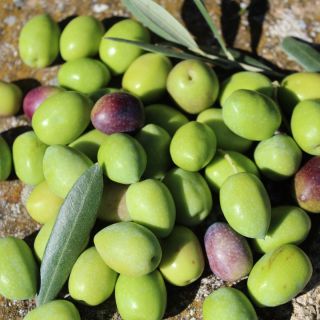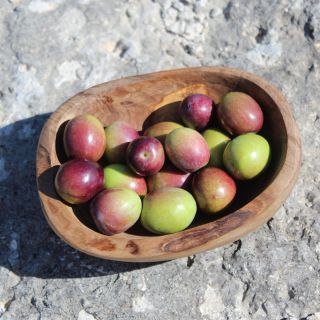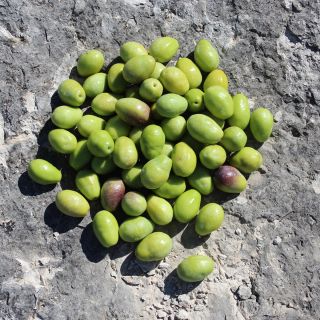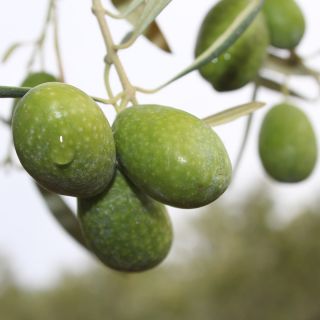Olive varieties
We pick the olives when optimally ripe, after conducting an organoleptic analysis. To gain an initial idea, we even taste olives straight from the tree. At the mill, each variety is stored in separate tanks. Like the ingredients in a great culinary dish, they are tasted and blended to produce an olive oil with a typical Castelas taste.
L'Aglandau
The Aglandau variety, also called Béruguette locally, is resistant to cold and is mainly planted in our Saint Rémy de Provence groves on the north-facing slopes of Les Alpilles. It yields ovoid fruit with a fairly firm pulp. At Castelas, Béruguette is close to our hearts because it imparts to our oil the aromas of raw artichoke and grass, as well as amazing freshness and conservation properties.
La Grossane
Grossane, a majestic and imposing tree, has taken up residence at the foot of the Château des Baux. Legend has it that the Lords of Les Baux brought the variety back from the crusades. This tree is vigorous in every respect: its branches, which are the colour of green water; its thick, very dark green leaves; and its plentiful fruit, which are larger than other kinds of olive and give the variety its name.
It takes about 10kg of Grossane olives to make a litre of oil. But what an oil... Superbly subtle and rounded, it exudes lively, fresh aromas of grapefruit and tomato.
When picked nicely ripe, it also makes an excellent table olive, which has its own AOP label.
La Salonenque
It needs water in summer to produce plump fruit. When it does rain, we select and hand-pick the fattest fruit in September to make the famous split olives of the Vallée des Baux de Provence. Otherwise we wait until the end of October to harvest the fruit and make oil from it at Castelas Mill. Its oil is golden yellow in colour, with a mild and harmonious fruitiness that gives balance to our Castelas olive oil.
La Verdale










